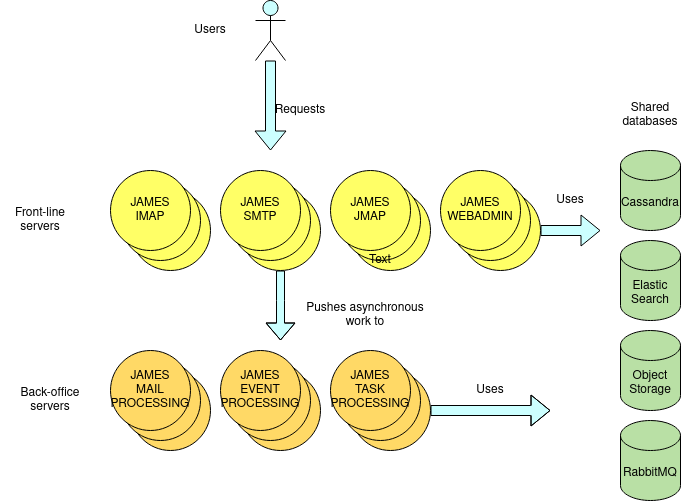Distributed James Server — Specialized instances
While it is perfectly possible to deploy homogeneous James instances, with the same configuration and thus the same protocols and the same responsibilities one might want to investigate in 'Specialized instances'.
This deployment topology consists of Distributed James servers with heterogeneous configurations on top of shared data-bases. Groups of James servers will thus handle various protocols and have different responsibilities.
This approach limits cascading failures across protocols and services. Think of OutOfMemoryErrors, Cassandra driver queue overuse, CPUs starvation, etc.
However, we can’t speak of micro-services here: all James instances runs the same code, James is still a monolith, and databases need to be shared across instances.

We speak of:
-
Front-line servers serves protocols. James enables to easily turn protocols on and off. Typically, each protocol would be isolated in its own group of James instances: james-imap, james-jmap, james-smtp, james-webadmin, etc… Refer to protocols configuration files to learn more.
-
Back-office servers handles other services like:
-
Mail processing.
-
Remote delivery.
-
Event processing.
-
Task execution.
Front-line servers will likely not handle back office responsibilities (but be sure to have back-office servers that do!). - Mail processing can be switched off. - Mailbox event processing can be switched off. - Task execution can be switched off. - Remote Delivery service is not started if the RemoteDelivery mailet is not positioned in mailetcontainer.xml.
Of course, the above instances can be collocated at will, to reach some intermediate deployments with fewer instances to mitigate costs.